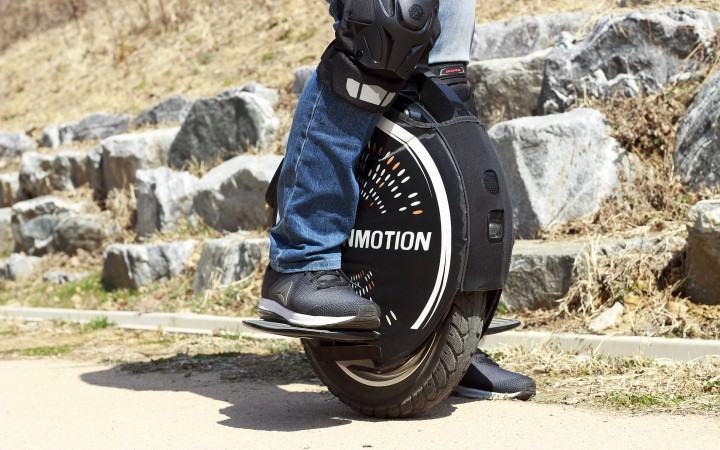Today’s Wonder of the Day was inspired by Cameron. Cameron Wonders, “What is a monowheel/monocycle and how does it work?” Thanks for WONDERing with us, Cameron!
You’ve likely ridden in a car before. You may have even taken a bus to school. Many kids love to ride around on scooters or bicycles. Are you a thrill-seeker? If so, you may have even ridden on the back of a motorcycle! But have you ever ridden in a vehicle with only one wheel?
No, we’re not talking about the unicycle. You may have seen those one-wheeled cycles at the circus. Instead, today’s Wonder of the Day is about the monowheel! This method of getting around also uses one large wheel. Instead of riding on top, like a unicycle, the rider sits inside—or sometimes next to—the wheel.
Does the monowheel sound like something of the future? Many might think so. However, the monowheel has actually been around for quite a while. Early monowheels hit the roads as early as 1869.
The first monowheel drivers powered the vehicles by pedaling. However, it didn’t take long for that to change. 20th-Century monowheels used engines, and the vehicle has continued to evolve since then. Today, you’ll find various models that can travel at a range of speeds.
But how exactly does a monowheel work? How does a rider keep it upright? Better yet, how does the rider keep from spinning around inside the wheel?
The first thing you should know about the monowheel is that it actually has two circular frames. These are called the outer and inner frames. It’s the outer frame that actually moves across the ground. The inner frame holds the power source and driver.
The inner and outer frames are connected by a set of rollers. These small wheels let the inner frame stay upright as the outer frame rolls around it. That’s why the driver doesn’t spin inside the wheel. The outer frame spins while the driver’s weight holds the inner frame in place.
Of course, no monowheel would be complete without a good set of brakes. The brakes allow the driver to slow and stop the monowheel, just like in any other vehicle. It’s important that an expert installs the brakes. Bad brakes on a monowheel can cause the inner and outer frames to lock. If that happens, the driver will spin around with the outer frame. Monowheel drivers call this “gerbiling.”
A monowheel stays upright in the same way a bicycle or motorcycle does. The driver shifts their weight to keep the vehicle balanced. The driver has to lean in the direction they want to travel—but not too far! Just like riding a bike, leaning too far in a monowheel can cause it to tip over.
How would you like to go for a ride in a monowheel? It’s certainly a unique vehicle and not for everyone. You won’t find many of these on the market. But you can definitely find footage of monowheels in action!
Standards: CCRA.R.4, CCRA.L.3, CCRA.L.6, CCRA.R.1, CCRA.R.2, CCRA.R.10, CCRA.SL.1, CCRA.W.2, CCRA.L.1, CCRA.L.2




